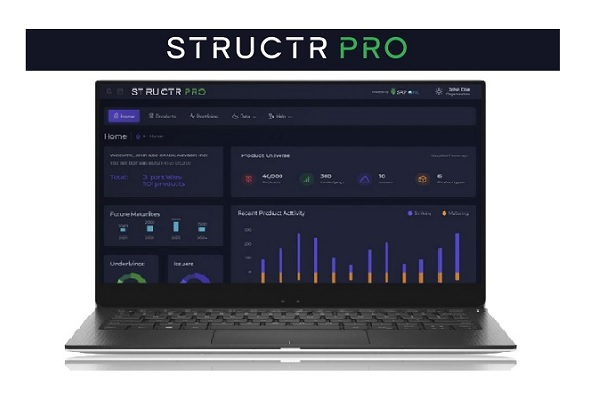Structured products traditionally divide into capital protected and capital at risk offerings. The key difference between these two categories is that capital protected products will return the investor’s initial capital in all circumstances irrespective of the performance of the underlying assets to which it is linked.
Capital protection
For structured products the term capital protected is not generally taken to mean that there is no associated credit risk. Since most structured products are issued by investment banks as senior unsecured credit (“notes”) they carry the same credit risk as traditional bonds that many banks might also issue. In many jurisdictions there is a deposit wrapper available in for capital protected products which subject to certain eligibility offer investors protection against issuer default up to the scheme limit. This further strengthens their claim to be fully protected.
Capital protected structured products are generally made up of a “zero coupon bond” which repays the initial capital at maturity plus one or more options or coupon components to provide upside. Typical choices are a long call option (for a participation product), a long call spread (for capped participation product) and a digital option.
Capital at risk products by contrast will have a short option or a zero-coupon bond which has a face value of less than 100%. Typically the short put option is attached to a product with high income stream or geared call options.
Most capital at risk products do not simply have a short position in a vanilla at-the-money put option of the underlying asset since this would expose the investor to losses even in the event of a small amount of market decline. It is very common to have a barrier which protects the investor from losses unless the barrier level is breached. This reduces the downside risk at the cost of less favourable product features (for example income or equity participation).
Usual barrier levels
Generally distributors have set barrier levels at those which reduce risk to capital but does not lose all the advantages in terms of yield or return. For “investment” style products (usually five years or longer and linked to one or more Equity Indices) the preferred solution is to set the barrier at between 50% and 70% of the initial level of the underlyings.
The recent upward trend of interest rates has meant that a larger number of capital protected products have been issued in the last year or so because it is possible to offer yields or potential yields at levels that many investors find appealing without any capital risk.
If the risk-free rate is 1%, a capital at risk product targeting a yield of 7% is necessarily taking significant risk, through an aggressive barrier level, volatile or high dividend underlyings, or the worst of construction. When the risk-free rate is instead 5%, a capital at risk product with the same profile might now be able to achieve 10-11%. Since investor income targets are often driven by perception or their spending requirements many of them would still be happy with income of 7-8% even when rates have risen. This accordingly can be achieved at much lower risk and one solution has been to offer capital at risk products with barriers at extremely low levels in a way that has not been done in large numbers before.
Deep barriers as a hybrid solution
Many recent examples have been seen in Europe and Asia with barrier levels set at 35%-40% of the initial underlying level well below the 50% level which is generally the lowest such barriers are set. These products are most commonly linked to individual stocks, or worst-of combinations.
The use of such low barriers fits this investor group very well since they can offer a higher yield than the risk-free rate but with barrier levels that appear extremely safe. Part of the reason that such barrier levels generate enough extra premium is that while a low barrier much reduces the probability of losing capital it does so by eliminating the middle loss cases and leaves the higher value extreme loss cases.
Examples from European markets
Two such examples in Europe (both issued in Euros) show different approaches.
BNP Paribas has issued a three-year Memory Income Autocall linked to eBay, Zalando and Farfetch in Italy. This product pays 17.4% p.a. on a monthly schedule if all three of its underlyings are above 30% of their initial levels. The memory feature means that any missed payments are made on the next occasion that all three underlyings are above the coupon barrier. The product calls if all three underlyings are above their start level at any monthly observation starting at six months. It also has a final European capital barrier set at 30% of the initial level.
Barclays have also issued a product with a 30% European barrier over a five-year term into the French market. It is a reverse convertible linked to the Eurostoxx-50 index and pays 4.7% p.a.. This is a much more modest target but still well in excess of current EUR five-year swap rates which are around 3%.
While both products have a barrier set at 30% there are major differences in choice of underlyings which explain the contrast of the yield levels. BNP Paribas has elected to use the worst of three very speculative stocks whereas the Barclays product is simply linked to the EuroStoxx-50. The BNP Paribas product does not truly feel like a low-risk product despite the barrier level illustrating the need to assess any headline terms of a product. Its yield clearly suggests significant residual risk and the PRIIPS SRI risk number is 6 on the usual 1-7 scale. The Barclays product is more representative of this trend.
Other European countries such as Germany have also seen issuance of products with such low barriers. Within Europe as a whole 160 such products have been issued with a total notional of USD 480m. Outside Europe the only market to have adopted this approach in any meaningful way is South Korea with a total of 110 products at a notional total of USD 175m. Data is from the start of 2023 and is from www.structuredretailproducts.com global databases.
There has been an increase in the popularity of capital protected products made possible by rising interest rates. This also opens up a middle ground for capital at risk products that take lower risk and one way to achieve this is to use a very low barrier.
Tags: Stress testingA version of this article has also appeared on www.structuredretailproducts.com
Image courtesy of: Claudio Schwarz / unsplash.com













